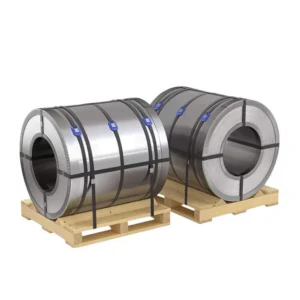Cold Rolled Grain Oriented Steel: Key Material for Energy-Efficient Electrical Infrastructure
In an age where global energy systems are under pressure to perform more efficiently and sustainably, cold rolled grain oriented steel (CRGO) has become an indispensable material in the construction of electrical transformers and related infrastructure. This specialized steel, known for its magnetic properties and directional grain alignment, enables significant energy savings, particularly in large-scale power distribution.
The demand for cold rolled grain oriented steel is rising in both developed and emerging markets, driven by the need to modernize power grids, expand renewable energy installations, and reduce carbon emissions. This article explores the science, manufacturing process, applications, and advantages of cold rolled grain oriented steel in detail—making it essential reading for professionals in the power and energy sectors.
What is Cold Rolled Grain Oriented Steel?
Cold rolled grain oriented steel is a type of silicon steel manufactured specifically for magnetic core applications. The steel is cold rolled and then subjected to a complex heat treatment process that aligns the grains in the direction of rolling. This directional grain structure enhances the steel’s magnetic properties along that axis, resulting in:
- Low core loss
- High magnetic permeability
- Superior efficiency in static magnetic fields
The term “grain oriented” refers to the alignment of crystal structures during processing, which allows for efficient magnetic flux flow. This steel is primarily used in devices where magnetic efficiency is paramount, such as transformers and high-efficiency electrical reactors.
The Manufacturing Process of CRGO Steel
Producing cold rolled grain oriented steel is a highly technical and tightly controlled process involving multiple steps:
- Hot Rolling and Pickling: The initial slab is hot rolled and pickled to remove oxides.
- Cold Rolling: Reduces thickness and prepares the material for precise grain orientation.
- Decarburization Annealing: Reduces carbon content and develops a uniform oxide layer to promote favorable grain growth.
- Secondary Recrystallization: This step is crucial, encouraging the growth of Goss texture {110}<001>, which aligns the grains.
- Insulating Coating Application: Applied to reduce eddy current loss and improve electrical insulation between lamination layers.
- Final Annealing: The last heat treatment finalizes the magnetic and mechanical properties.
Modern manufacturing lines utilize laser scribing, automated inspection, and real-time process control systems to ensure high-quality and performance consistency.
Key Properties of Cold Rolled Grain Oriented Steel
Cold rolled grain oriented steel is engineered for peak magnetic performance and long-term reliability. Its key properties include:
- Magnetic Permeability: Enables efficient magnetic flux flow in one direction.
- Low Core Loss: Reduces energy dissipation in transformer cores.
- Coercivity: Very low, enabling easy magnetization and demagnetization.
- Surface Insulation Resistance: Prevents electrical leakage and minimizes eddy current losses.
- Thermal Stability: Maintains performance under high-load and high-temperature conditions.
These properties make it one of the most effective materials available for power transmission systems.
Applications of CRGO Steel in Electrical Engineering
Cold rolled grain oriented steel is primarily used in components where magnetic field strength and energy efficiency are critical. The most common applications include:
- Power Transformers: CRGO forms the core laminations, reducing losses and ensuring thermal stability.
- Distribution Transformers: Used in both urban and rural networks for consistent and efficient electricity delivery.
- Current Transformers: Where precision in measurement is vital, CRGO steel maintains magnetic fidelity.
- Voltage Regulators and Rectifiers: Depend on the stable magnetic properties of CRGO for reliable operation.
- Smart Grid Equipment: Compact, low-loss designs in substations and renewable grid connections.
With the rise of decentralized power systems and grid electrification, the demand for CRGO steel in these applications is expected to grow significantly.
Advantages Over Other Steel Types
Cold rolled grain oriented steel is often compared to non-grain oriented (NGO) electrical steel. While both serve in electromagnetic applications, CRGO provides several advantages for static field applications:
| Feature | CRGO | NGO |
|---|---|---|
| Magnetic Alignment | Directional | Random |
| Core Loss | Lower | Higher |
| Application | Transformers | Motors, Generators |
| Efficiency | Higher | Moderate |
| Thickness Range | 0.18–0.35 mm | 0.35–0.65 mm |
Because of its superior performance in transformer cores, CRGO is the preferred choice for power infrastructure developers aiming to minimize energy losses.
Cold Rolled Grain Oriented Steel and Energy Efficiency
One of the most impactful characteristics of cold rolled grain oriented steel is its role in improving energy efficiency. In power transformers, a significant portion of energy loss comes from the core material. By using CRGO steel, engineers can reduce no-load losses by up to 30% compared to standard materials.
This translates directly into:
- Lower operating costs
- Smaller transformer footprints
- Reduced carbon emissions
- Longer equipment life cycles
In high-voltage and extra-high-voltage transformers used in long-distance transmission, the performance gains are even more substantial.
Global Market Demand and Regional Trends
The demand for cold rolled grain oriented steel is being driven by infrastructure modernization and renewable energy projects, especially in:
Europe
Europe’s aging power infrastructure is undergoing rapid upgrades. With strict energy efficiency regulations and decarbonization goals, utilities are replacing old transformers with newer, CRGO-based high-efficiency models.
Middle East
The Middle East is investing in smart cities, clean energy hubs, and high-reliability power grids. Cold rolled grain oriented steel is being used in substations and renewable integration projects, especially in the UAE and Saudi Arabia.
Asia
China, Japan, and South Korea remain leading producers and exporters of CRGO steel. However, growing domestic demand and trade complexity are encouraging buyers in Europe and the Middle East to diversify sourcing strategies.
Innovations in CRGO Steel Production
Recent advancements in CRGO production include:
- Laser Scribing: Improves magnetic performance by refining domain structure.
- Ultra-Thin Laminations: Allow for more compact core designs.
- High-Permeability Grades (Hi-B and Super Hi-B): Used in premium transformer designs.
- Eco-Friendly Coatings: Reduce environmental impact during manufacturing and recycling.
- Digital Quality Control: AI and machine vision systems now monitor coil integrity in real time.
These innovations make cold rolled grain oriented steel not only more effective but also more sustainable.
Environmental Impact and Sustainability
Cold rolled grain oriented steel aligns well with sustainability goals:
- It is 100% recyclable without significant degradation in performance.
- Its use reduces transformer energy losses, decreasing greenhouse gas emissions.
- Many manufacturers now operate low-carbon production lines powered by renewable energy.
- Coatings are becoming increasingly biodegradable and solvent-free.
As part of a circular economy strategy, CRGO steel is both high-performance and environmentally responsible.
Conclusion
Cold rolled grain oriented steel is more than just a refined material—it’s a technology enabler in modern power systems. From reducing grid losses to enabling smarter energy distribution, CRGO steel plays a crucial role in meeting today’s and tomorrow’s electrical efficiency goals.
Its unique properties, including directional magnetic alignment and low core loss, make it the ideal choice for transformers and static magnetic field applications. For utility providers, grid engineers, and transformer manufacturers across Europe and the Middle East, investing in cold rolled grain oriented steel isn’t just a technical decision—it’s a strategic step toward performance, reliability, and sustainability.




